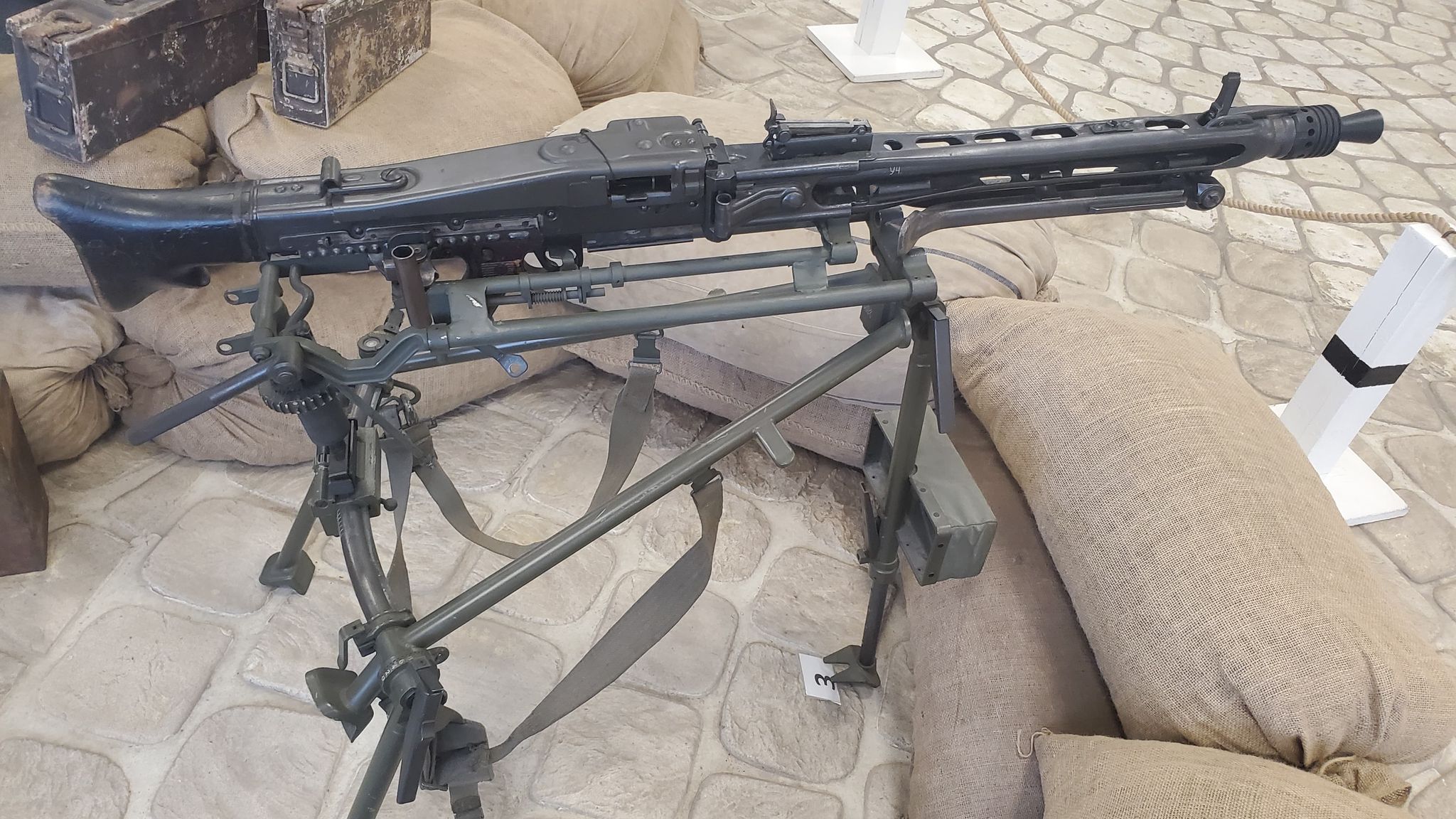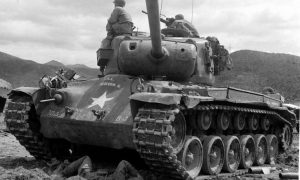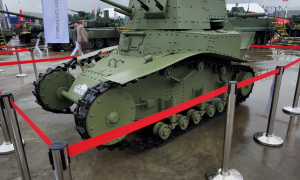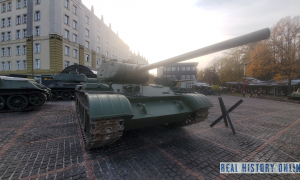MG42 Machine Gun History
By the beginning of World War II, the Wehrmacht had the MG 34 created in the early 1930s as a single machine gun. For all its merits, it had two serious drawbacks: first, it turned out to be very picky about the skills of the operator and the quality of ammunition; secondly, it was extremely time consuming and expensive to manufacture, which did not allow satisfying the ever-increasing needs of the troops for machine guns.
MG 42 was created in the little-known company “Factory of metal and lacquer ware Johannes Großfuß ” in Döbeln (German. Metall-und Lackwarenfabrik Johannes Großfuß). The machine gun was intended to replace the single MG 34 machine guns in service with the Wehrmacht, Waffen SS and Luftwaffe. Adopted by the Wehrmacht in 1942. The machine gun was put into production at the Grossfus plant itself, as well as at the Mauser-Werke factories, Gustloff-Werke and others. – For the high rate of fire it received the nicknames “Bone cutter”, “Hitler’s Buzz Saw”, “Emga”, “Krestovik”. Production of the MG 42 continued in Germany until the end of the war, with a total production of at least 400,000 machine guns. At the same time, the production of the MG 34, despite its shortcomings, was not completely phased out, and its production was also continued, incl. and in the post-war period, since it, due to some design features (rear barrel change, the ability to feed the tape from either side), is better suited than the MG 42, for installation on military equipment.
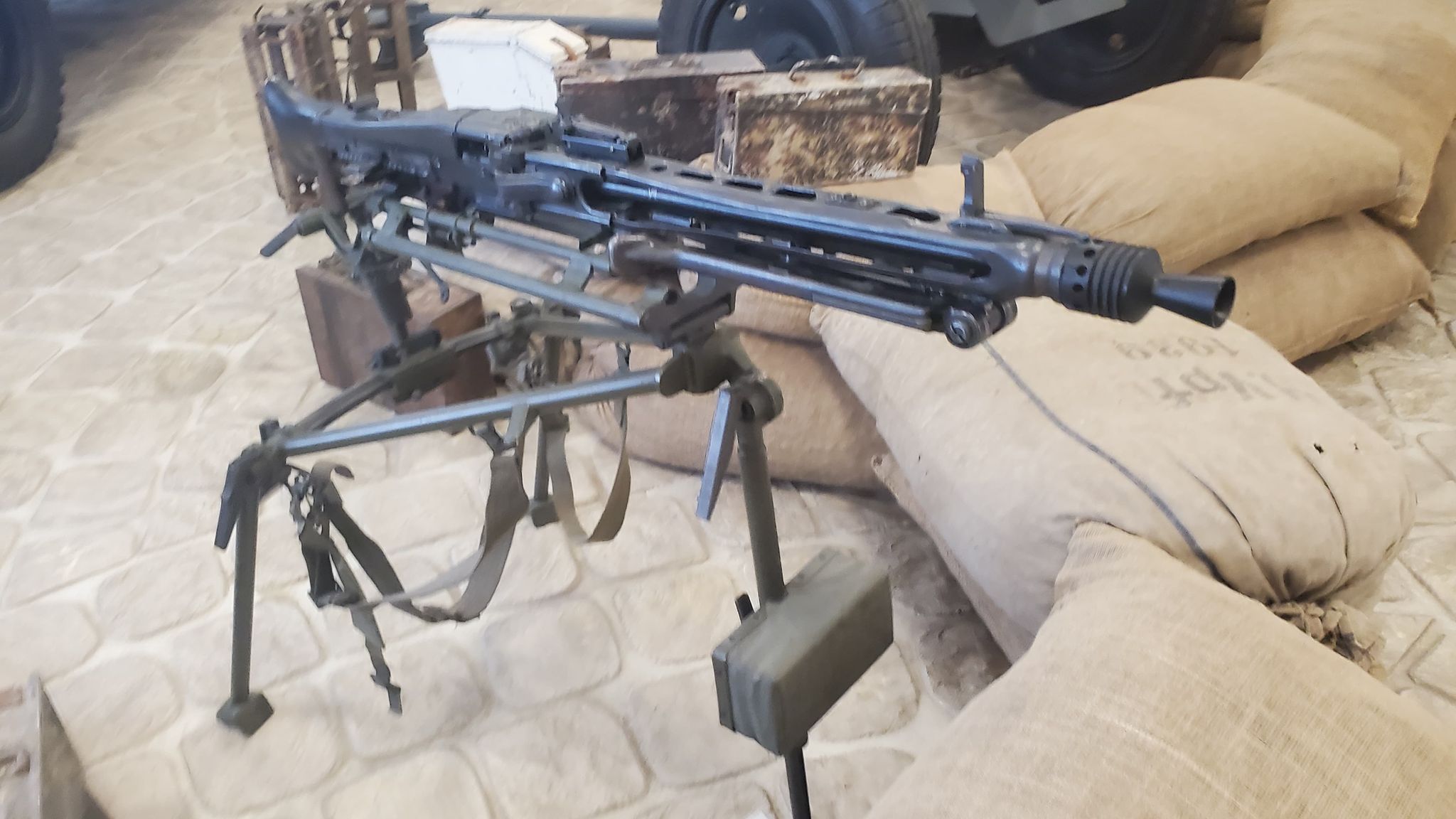
At Vadim Zhodorojniy’s Technical Museum
MG 42 was developed for quite specific requirements: it had to be a single machine gun, the cheapest to manufacture, the most reliable and with high firepower – up to 20-25 rounds per second or more, achieved by a relatively high rate of fire. Although the MG 42 design used some parts of the MG 34 machine gun (which facilitated the transition to the production of a new machine gun model in war conditions), in general it is an original system with high combat characteristics. Higher manufacturability of the machine gun was achieved due to the widespread use of stamping and spot welding: the box together with the barrel shroud were made by stamping from a single blank, while the MG 34 had two separate parts made on milling machine tools. For the sake of simplicity, the possibility of supplying the tape from either side of the weapon, the possibility of magazine power supply and the switch of fire modes were abandoned. As a result, the number of parts was reduced to 200. As a result, the cost of the MG 42 compared to the MG 34 decreased by about 30% (the MG 34 machine gun cost the Wehrmacht 300 marks), and the metal consumption by 50%. Compared to the MG-34, the MG-42 had its drawbacks – the inability to conduct single fire and less “life” of the machine gun. These shortcomings were the result of a cheaper design.
MG-42 Manufacturing Engineering
The MG was essentially made from stamped and formed parts. Only the most important parts were painstakingly milled from solid steel. This allowed the weapon to be produced quickly, cheaply and in large quantities. The somewhat primitive and messy-looking welding of the parts initially led the Allies , who captured early examples in North Africa, to believe that Germany had problems manufacturing infantry weapons. However, the MG 42 represented a milestone in weapon production insofar as it was the first firearm to be manufactured predominantly using sheet metal stamping technology. While the price of the MG 34 was still 310 RM (equivalent to 1,290 euros today), the MG 42 could be produced for only 250 RM (1,040 euros). The production time could be reduced from 150 to 75 working hours.
MG-42 Characteristics

Mg-42 Shoulder Fire Tactic
The MG 42 demonstrated high reliability, even in poor weather conditions, with good shooting accuracy. The ammunition used was the 7.92×57mm (aka 8×57 IS) rifle cartridge, which was also used in the Wehrmacht Mauser 98k carbine .
The MG 42 could be used both stationary and mobile. Stationary it was used, among other things, in the bunkers of Normandy to defend against the invasion, mobile it was mostly used by Panzergrenadiers . The MG came standard with a bipod that could be attached to the body at two different points. Front was the usual point for greatest firing accuracy, mounting in the center of the gun allowed for greater range of motion with reduced accuracy. Each MG 42 could also be mounted on a field carriage and was then referred to as a “heavy MG”, without this as a “light MG”.
The butt has a shoulder-shaped rest and a grip option so that the weapon can be held steady when firing.
With a simple flap on the right side of the barrel jacket , the barrel could be replaced within seconds, which was necessary because of the strong heat generated during prolonged firing. The machine gun squads carried up to five spare barrels with them. As a major improvement, the later series had hard-chromed barrels and mechanisms, which significantly reduced wear.
The MG 42 achieved a rate of 1500 rounds/min, which is high for infantry weapons , i.e. 25 rounds/s. This high rate of fire also predestined the weapon for anti-aircraft use ; sometimes the high ammunition consumption was also criticized, although the effectiveness was high.
How Did the MG42 Work?
The MG 42 machine gun works on the principle of barrel recoil (short stroke). It consists of the following main parts and mechanisms: a barrel with a casing box; bipedal bipod; butt pad with butt; shutter; locking, giving, percussion and trigger mechanisms. The shutter is locked by rollers (lugs), which are spread apart. The rollers are located in the combat cylinder and are bred when locked with bevels of the wedge, and when unlocked, they are reduced by bevels of the box. The striking mechanism of the striker type is located in the shutter. It consists of a drummer and a striker. The role of the mainspring is performed by the return spring. Trigger mechanism is located in the fire control handle and allows only continuous fire. The machine gun is powered by cartridges when firing from a flexible metal belt with a semi-closed link, which is one with the belt of the MG 34 machine gun. One belt can be attached to another with a cartridge, so that the length of the equipped belt can be increased.
Mg-42 Barrel cooling
As in the MG 34 machine gun, the problem of barrel overheating during prolonged firing was solved by replacing it. The barrel was freed by snapping off a special clamp. Changing the barrel required from 20 to 30 seconds, depending on the experience of the machine gunner, and one free hand, as a result of which it did not lead to delays in battle.
Post WW2 MG42 History
At the end of the war, the career of the MG 42, widely recognized as one of the best machine guns not only in World War II, but in genera. So, since the late 1950s , West Germany has been adopting MG 42 variants, with changes chambered for the 7.62 × 51 mm NATO cartridge (and others, including 7.5 mm), first under the designation MG 42/59, later – MG3. A single MG3 machine gun received an improved flash suppressor, a set of two bolts – light and heavy, more reliable barrels, mount for sniper sights. The same machine gun is still in service in Serbia, Croatia, Israel, Turkey, Greece, USA (where it is also produced in small series), India, Egypt, Poland, and in a number of NATO member countries (and not only). In Yugoslavia, MG 42 under the name Zastava M53 was in service until the 2000s in a version for the original 7.92×57 mm cartridge . Switzerland adopted a variant of the MG 51 machine gun under its 7.5 × 55 mm cartridge in 1951, and a few years later SIG Sauer developed several commercial (export) versions on its basis for 6.5 × 55 mm and 7.92 cartridges. × 57 mm, but a lighter analog of the Rheinmetall MG3 – SIG MG 710-3 went into the series under the NATO patron.
This machine gun is still actively used in many military conflicts.
T24
During the war, the US military attempted to copy the MG 42 as a possible replacement for the Browning Automatic Rifle and M1919A4 in infantry squads. The T24 version was conceived for the use of the .30-06 cartridge . A working prototype was built under the T24 index. It could be used on the M2 machine. Due to the fact that the American .30-06 cartridge was too long for a single machine gun, as well as due to the design flaws of the prototype – disgusting accuracy and low effective range, the project was canceled.
MG3
The modern version of the MG 42 is the MG3 machine gun manufactured by Rheinmetall AG. It is in service with the Bundeswehr and is widely exported to various countries. Also produced under license in Greece , Pakistan , Spain and Turkey. It features the same high rate of fire like its predecessor. The rate of fire in bursts can be regulated by various bolts: the lighter the bolt, the higher the rate of fire of the machine gun. Although the prototype machine gun was released more than 70 years ago, the MGZ is still a highly effective weapon. The problem with using this machine gun is the need to change the barrel at a very high rate of fire. Even when firing in short bursts, with an increase in the rate of fire up to 1250 rounds per minute, the shooter must change the barrel after 150 rounds or every 36 seconds.
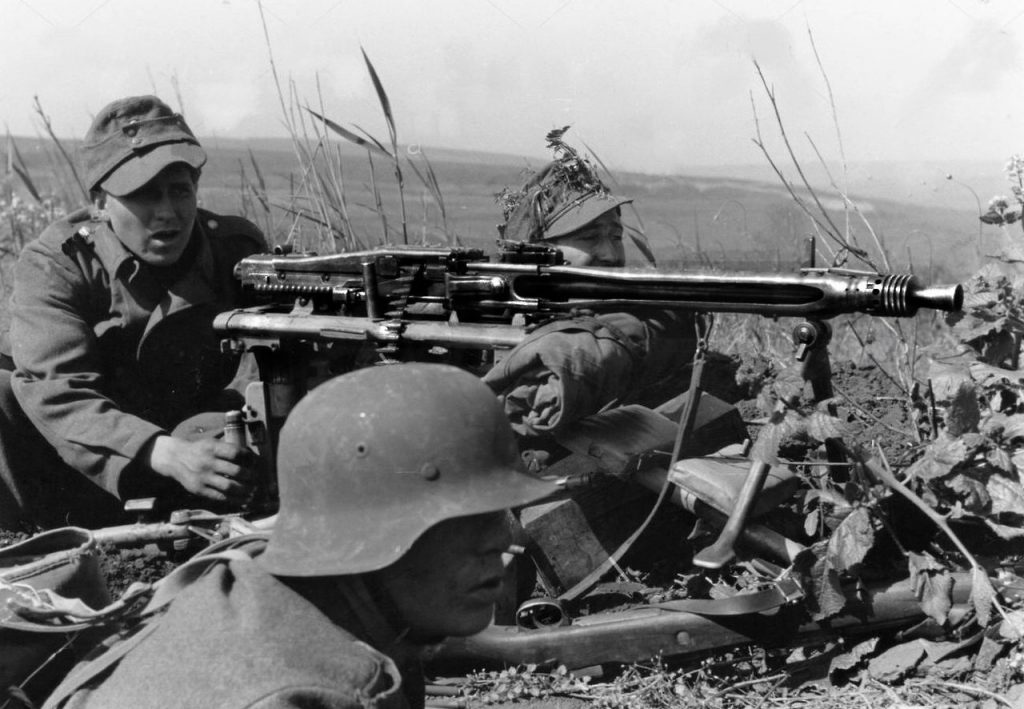
Yugoslavia created the M53 based on the MG 42 by reverse engineering at the Crvena Zastava plant, retaining the old German caliber chambered for 7.92 × 57 mm. The Yugoslavs tried to keep the original design of the machine gun, so that the M53 is almost indistinguishable from the original. The main difference is the reduced rate of fire. Otherwise, the characteristics of the machine gun are the same as those of the MG 42. Those MG 42s that were captured at the end of World War II were added to the reserve of the Yugoslav People’s Army as M53 / 42. Many M53s were sold to Iraq and took part in both wars in the Persian Gulf… In Yugoslavia itself, the M53 machine guns were last used by the military in 1999. The machine gun also bore the designation “Sharats” ( Serb. Sharats / Šarac ).
Steyr MG-74
The latest in a series of MG 42 variants is the Austrian MG-74, which has been the standard single machine gun in the Austrian armed forces since 1974 .
After its founding in 1955, the Austrian army was equipped with obsolete American Browning M1919 machine guns . Starting in 1959, Browning machine guns were gradually replaced by German MG 42/59 (MG 1A2) under the standard NATO cartridge – 7.62 × 51 mm.
However, the Bureau of Defense Technology, in collaboration with Steyr Mannlicher and Beretta, developed a machine gun specifically for the Austrian army. The modified German MG 42/59 (which also became the basis for the MG3) chambered for NATO served as the basis for the creation of its own single machine gun. The development of a modified machine gun was completed in 1974.
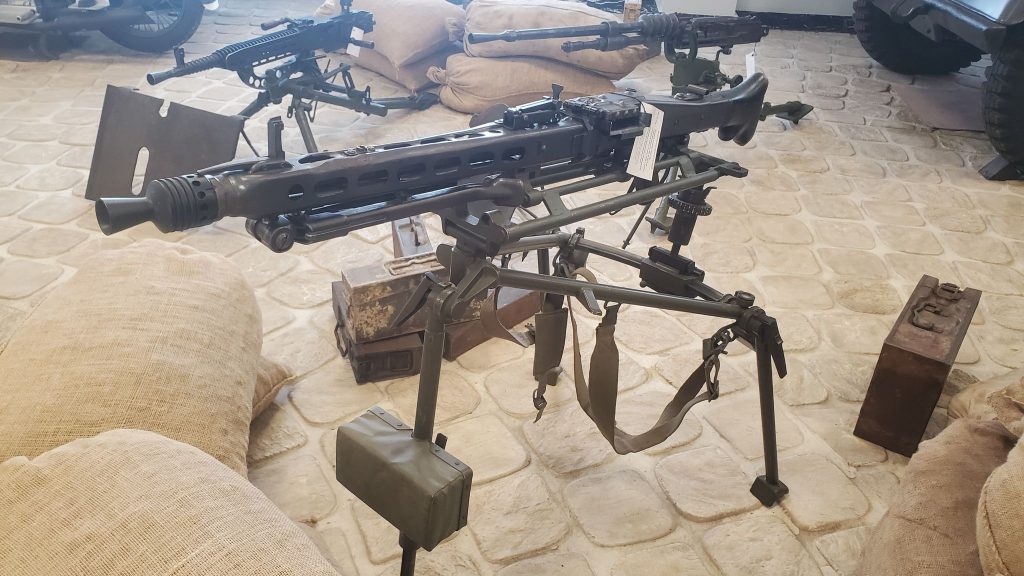
The design changes include a heavier bolt: 950 grams versus 675 grams of the MG3 bolt, which lowers the rate of fire to 900 rounds per minute. Added a switch to allow single fire. The MG-74 has a polymer grip and a dark green buttstock, an adjustable rear sight (35 ° horizontally, 15 ° vertically) and can be equipped with an additional anti-aircraft sight.
Soviet Counterpart to MG42
For the needs of the Soviet army in the 30s of the last century, a large-caliber machine gun Degtyarev-Shpagin DShK was designed and put into production. The weapon had impressive fighting qualities and was capable of fighting both light armored vehicles and aircraft. For a long existence it has been used in the Second World War, the civil war in China, on the Korean Peninsula, in Afghanistan and Syria. The Russian army long ago replaced it with more modern machine guns, but the DShK is still used by some armies of the world.


